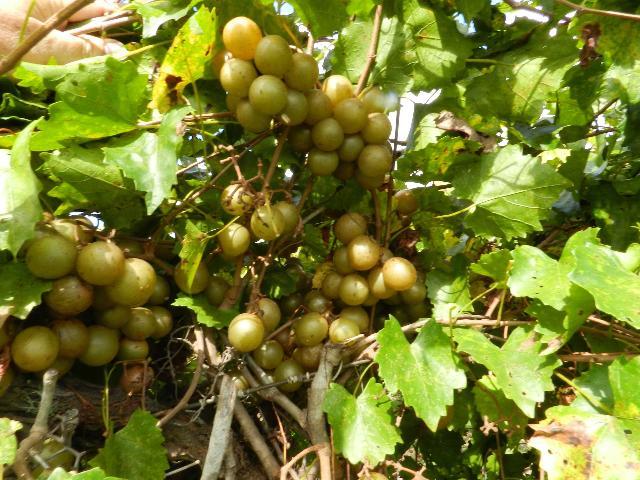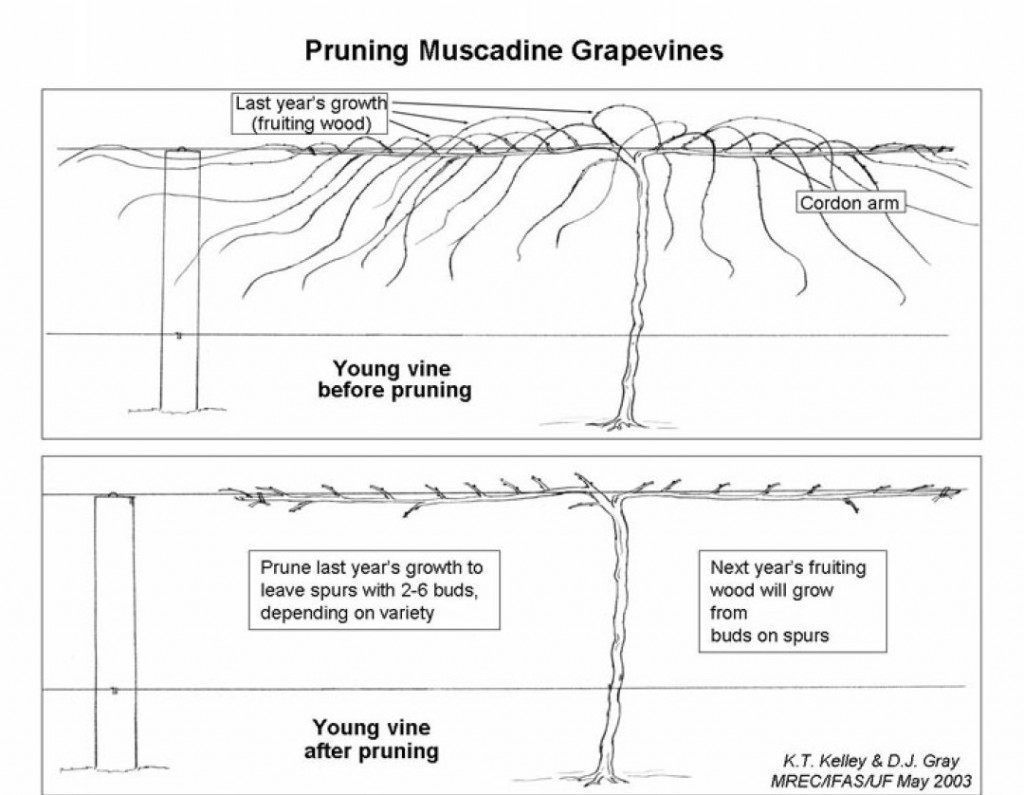Muscadines are a terrific grapey treat this time of year ’till fall throughout North Florida. To grow muscadines well in the home garden, care must be taken when pruning to maximize spatial efficiency and yield.
August is the very beginning of the muscadine harvest in the Florida Panhandle, which may last until October. Therefore it is also the time to begin thinking about pruning.
Once harvest concludes, it is usually a gardeners’ natural inclination to immediately prune their muscadine vines. This fast action is not the best for plant condition and next year’s yield, especially if there is an early frost. Early frosts surprise the plant before sugars have been moved to the roots for storage during dormancy. Therefore, waiting to prune in mid January to mid March will ensure that the vine has had adequate time to go dormant and acclimate to the winter season. A good rule of thumb is to wait to prune until bud swell or even first leaves emerge. This will greatly reduce the chance that vines are damaged by late frosts.
Muscadines flower and fruit on shoots from current, not previous, years growth. These new bearing shoots arise from the leaf axils of the previous years’ growth. Pictured above is the bi-lateral cordon training system. This is the most popular system for muscadine production. Pruning must be performed to maintain this configuration. If vines are too vigorous, it is acceptable to prune lightly throughout the growing season.
Vines must also be trimmed before herbicide application at least 2 feet from the ground. Nonselective systemic herbicides don’t harm tissue with bark, but must not come in contact with green tissue or it will be translocated to the roots and damage the plant.
Using a bi-lateral cordon system, there are two main branches or “cordons” of the vine. Along each cordon, fruiting spurs should be spaced approximately every six inches. Each fruiting spur should contain 2-4 nodes.
If fruiting spurs become more than one foot from the cordon, it is time for spur renewal. This is typically done every 3-6 years. Entire spurs can be removed if they lose productivity and replaced by new shoots. Additionally, cordons may lose productivity or die off after 5 to 10 years of production. If this occurs, simply remove the cordon and train a new or existing branch into a new cordon.
Pruning with a design in mind and at the proper time will enhance performance and longevity of muscadines in the home garden.
Information from this article was derived from HS763 The Muscadine Grape
Peter C. Andersen, Timothy E. Crocker and Jacque Breman
- Woodland Pinkroot Adds Vibrant Color to Spring Landscapes - April 27, 2023
- Easy Care Roses for the Gulf South - April 20, 2023
- Herb Gardening: When Oregano is Flavorless - March 9, 2023


